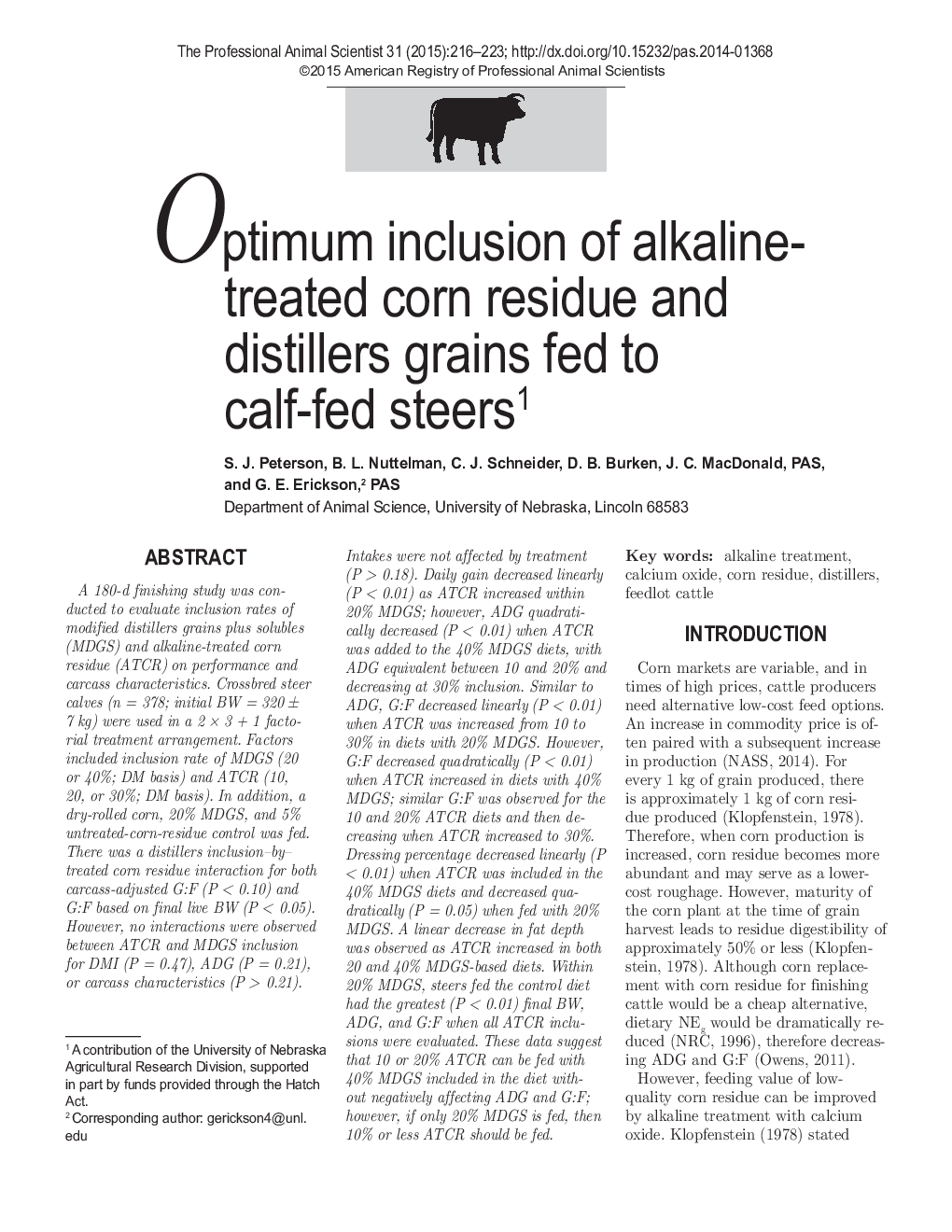| Article ID | Journal | Published Year | Pages | File Type |
|---|---|---|---|---|
| 10161810 | The Professional Animal Scientist | 2015 | 8 Pages |
Abstract
A 180-d finishing study was conducted to evaluate inclusion rates of modified distillers grains plus solubles (MDGS) and alkaline-treated corn residue (ATCR) on performance and carcass characteristics. Crossbred steer calves (n = 378; initial BW = 320 ± 7 kg) were used in a 2 Ã 3 + 1 factorial treatment arrangement. Factors included inclusion rate of MDGS (20 or 40%; DM basis) and ATCR (10, 20, or 30%; DM basis). In addition, a dry-rolled corn, 20% MDGS, and 5% untreated-corn-residue control was fed. There was a distillers inclusion-by-treated corn residue interaction for both carcass-adjusted G:F (P < 0.10) and G:F based on final live BW (P < 0.05). However, no interactions were observed between ATCR and MDGS inclusion for DMI (P = 0.47), ADG (P = 0.21), or carcass characteristics (P > 0.21). Intakes were not affected by treatment (P > 0.18). Daily gain decreased linearly (P < 0.01) as ATCR increased within 20% MDGS; however, ADG quadratically decreased (P < 0.01) when ATCR was added to the 40% MDGS diets, with ADG equivalent between 10 and 20% and decreasing at 30% inclusion. Similar to ADG, G:F decreased linearly (P < 0.01) when ATCR was increased from 10 to 30% in diets with 20% MDGS. However, G:F decreased quadratically (P < 0.01) when ATCR increased in diets with 40% MDGS; similar G:F was observed for the 10 and 20% ATCR diets and then decreasing when ATCR increased to 30%. Dressing percentage decreased linearly (P < 0.01) when ATCR was included in the 40% MDGS diets and decreased quadratically (P = 0.05) when fed with 20% MDGS. A linear decrease in fat depth was observed as ATCR increased in both 20 and 40% MDGS-based diets. Within 20% MDGS, steers fed the control diet had the greatest (P < 0.01) final BW, ADG, and G:F when all ATCR inclusions were evaluated. These data suggest that 10 or 20% ATCR can be fed with 40% MDGS included in the diet without negatively affecting ADG and G:F; however, if only 20% MDGS is fed, then 10% or less ATCR should be fed.
Related Topics
Life Sciences
Agricultural and Biological Sciences
Animal Science and Zoology
Authors
S.J. Peterson, B.L. Nuttelman, C.J. Schneider, D.B. Burken, J.C. PAS, G.E. PAS,
